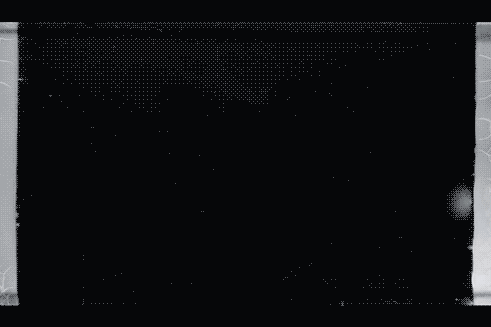This time-lapse is one of the most compelling---and unsettling---visualizations of evolution we've ever seen. The overhead footage depicts a strain of the gut bacterium E. coli evolving to be 1,000 times more resistant to an antibiotic in a matter of 11 days, starkly visualizing the speed with which diseases can adapt to the drugs we throw their way.
This striking demonstration plays out on a giant petri dish called the Microbial Evolution and Growth Arena plate (MEGA-plate, for short), but the researchers who designed it refuse to take credit for it. “We really did not invent the MEGA-plate. It was invented in Hollywood, of all places," says Roy Kishony, a systems biologist at the Technion---Israel Institute of Technology. “I don’t know if you know this movie Contagion, but it has a billboard ad that was done for it, and it is basically a gigantic petri dish,” he says.
The Contagion billboard gave Kishony an idea. If he and his team---including Harvard biologists Tami Lieberman and Michael Baym---could build a large enough petri dish, they could use it to visualize antibiotic resistance in a lucid way. It's no secret that drug-resistant superbugs are making it increasingly difficult to treat everything from gonorrhea to UTIs, and evidence suggests the threat is likely to increase. But antibiotic resistance is a tough problem to visualize---and not just because bacteria are microscopic. Acquired resistance is a concept that can be difficult to impress upon non-scientists, especially if they just wants to know why they can't buy their favorite antimicrobial soap anymore.
So Kishony and his team built the MEGA-plate and filled it with a media on which E. coli could grow, die, evolve, and propagate. Next they dosed the media with greater and greater concentrations of antibiotics; the outermost reaches of the plate received no antibiotic whatsoever, but by the time they got to the center of the plate, Kishony and his team had laced the agar with antibiotics at 1000 times the concentration needed to kill their starting strain of E. coli. Then they switched on their video camera, seeded the antibiotic-free section of the plate with bacteria, and watched what happened.
.
It took some doing (the first few colonies succumbed to contamination and water condensation) but eventually they had the movie you see here. “It suddenly looked like magic,” Kishony says. The video is an 11-day time-lapse. Every second of video translates to about five hours of real time.
In it, you can watch as the bacterial colony spreads, white and blob-like, across the agar in the Petri dish. Whenever the colony encounters a higher concentration of antibiotic, it pauses. Untold bacteria perish. But seconds later, a small extension of the colony crosses the threshold. These pioneering microbes, which have evolved resistance to the higher concentration of antibiotic, go on to colonize this new, drug-dense territory. That is until they encounter the next antibacterial boundary. The process then repeats. At each new stage, mutant bacteria bridge the divide and surge onward, begetting an increasingly resistant strain of E. coli.
Kishony and his team knew this would happen, but that doesn't make the MEGA-plate pointless. For starters, it's an uncommonly powerful visualization of evolution, and its role in the rise of superbugs. It also gives biologists a tool to better analyze how those superbugs develop. From the sound of it, this video is the first of many. “We plan on mapping all the different ways bacteria can become resistant, and using this to develop diagnostic tools that can foresee the future,” Kishony says. With that, physicians might learn more about how these pathogens evolve---and what we can do to stop them.
